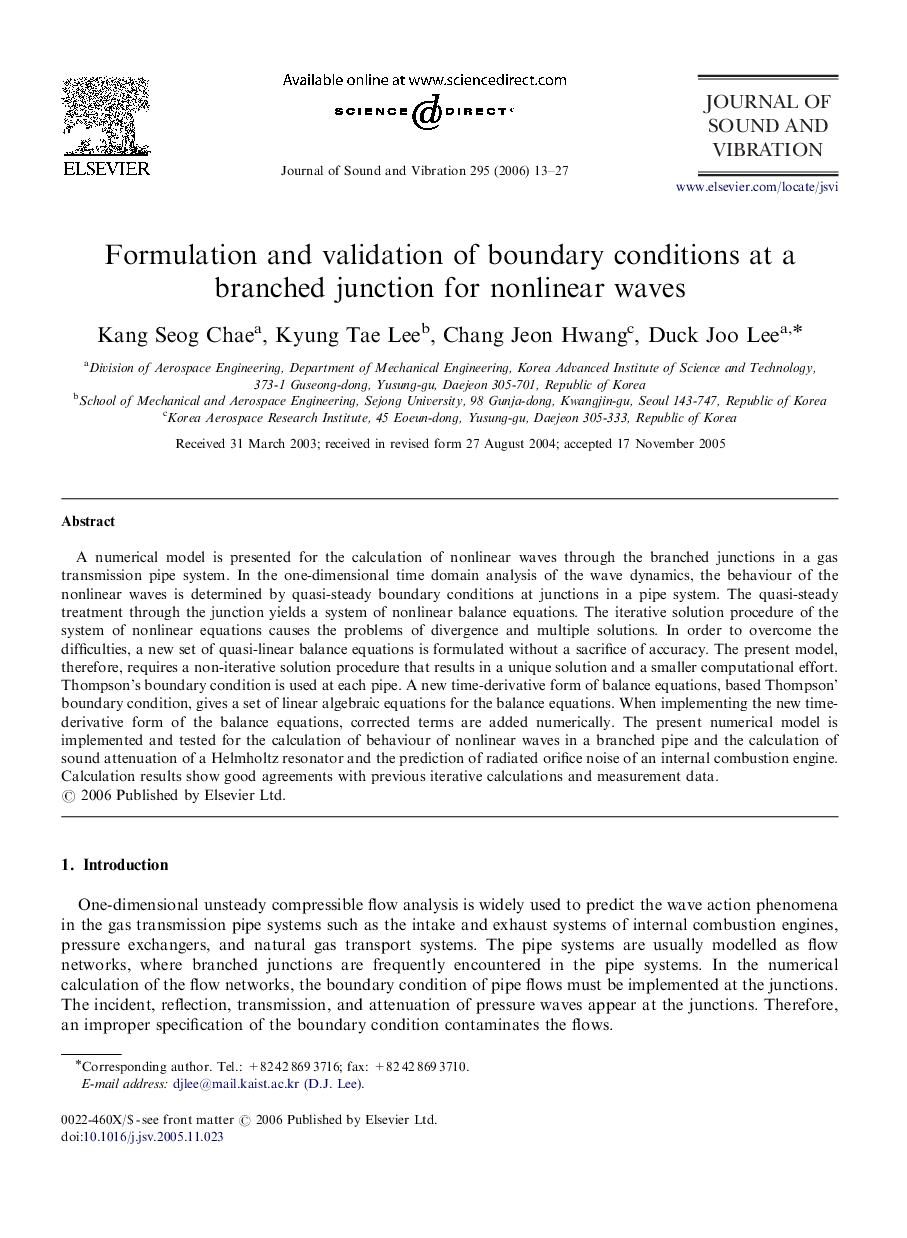| Article ID | Journal | Published Year | Pages | File Type |
|---|---|---|---|---|
| 292305 | Journal of Sound and Vibration | 2006 | 15 Pages |
A numerical model is presented for the calculation of nonlinear waves through the branched junctions in a gas transmission pipe system. In the one-dimensional time domain analysis of the wave dynamics, the behaviour of the nonlinear waves is determined by quasi-steady boundary conditions at junctions in a pipe system. The quasi-steady treatment through the junction yields a system of nonlinear balance equations. The iterative solution procedure of the system of nonlinear equations causes the problems of divergence and multiple solutions. In order to overcome the difficulties, a new set of quasi-linear balance equations is formulated without a sacrifice of accuracy. The present model, therefore, requires a non-iterative solution procedure that results in a unique solution and a smaller computational effort. Thompson's boundary condition is used at each pipe. A new time-derivative form of balance equations, based Thompson’ boundary condition, gives a set of linear algebraic equations for the balance equations. When implementing the new time-derivative form of the balance equations, corrected terms are added numerically. The present numerical model is implemented and tested for the calculation of behaviour of nonlinear waves in a branched pipe and the calculation of sound attenuation of a Helmholtz resonator and the prediction of radiated orifice noise of an internal combustion engine. Calculation results show good agreements with previous iterative calculations and measurement data.
